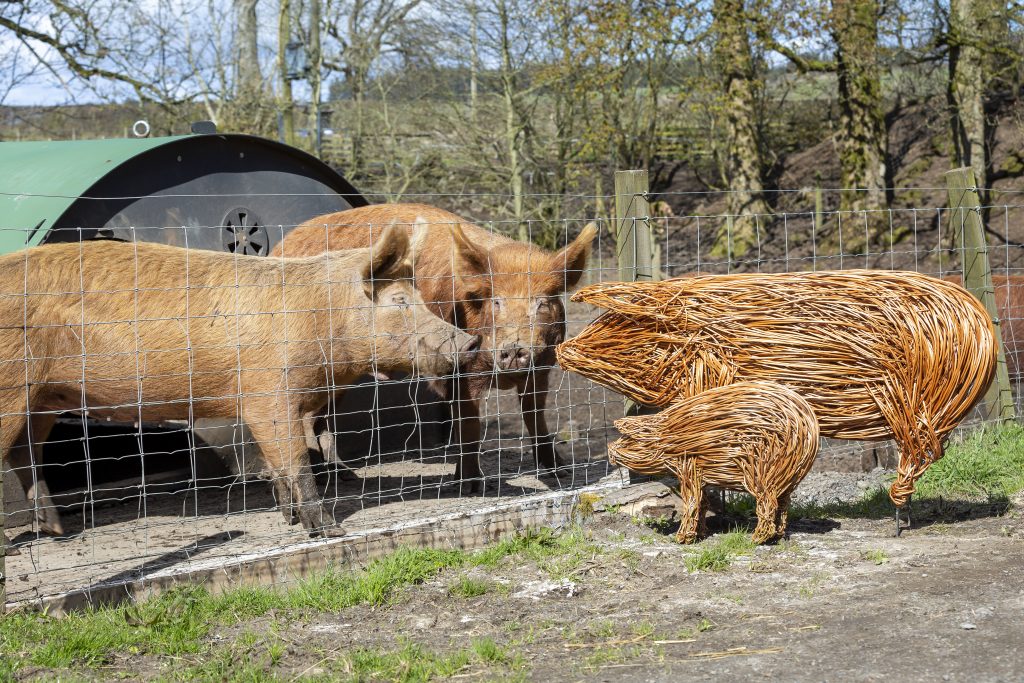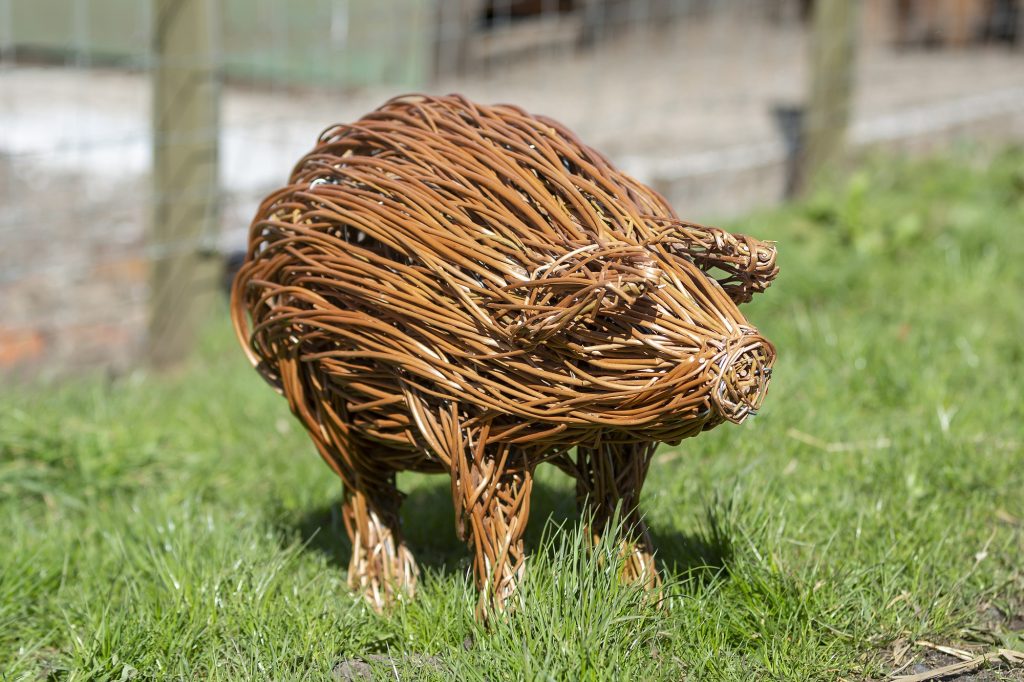Anna Cross is a willow artist based near Ripon, North Yorkshire. She combines traditional skills with artistic practice to create beautiful sculptures inspired by British wildlife and the surrounding countryside. She has created a series of willow sculptures for us of wild animals at the National Museum of Rural Life, East Kilbride for a dedicated trail around the farm. Anna tells us about her craft.
In the beginning
Willow sculpting was never in my thoughts as a career path after I left school. It certainly wasn’t an option in the career handbook in the library! I was torn between a degree in Zoology and Art and went down the science path, but I never gave up being creative. Whether it was painting, drawing or doodling, my hands were always busy making.

A few years later, I stumbled upon a weekend willow sculpting workshop. I had a go and that was that: the creative juices sparked into life! I loved the feel of using willow, the heritage, the sustainability and the endless opportunities to create. That was the beginning of my willow journey. Since then, I have gone on to learn the traditional craft of basketry and have taken some of those skills to create larger sculptures.

An ancient craft
Often considered the oldest and most widespread craft, basketry is known to have been around since 8,000 BC. It isn’t just willow that can be used. Many materials, such as plant fibres, straw, hazel, dogwood and even animal hair, can be woven. Anything that is pliable enough to weave with. This usually depends on where you live in the world and what grows naturally around you.

Willow weaving in the 21st century
Willow work has evolved significantly over the last 30+ years. The humble basket has developed and the versatility of willow is being stretched to the max. From animals to human figures and contemporary artwork, willow structures regularly pop up at visitor hotspots. And what’s not to love? A natural, sustainable material with a whole lot of heritage. For me, it’s got it all.

The willow sculpture process
The sculptures made for the National Museum of Rural life started with me drawing sketches of each animal. I then researched the breeds a little bit more (that’s the animal geek in me!). I researched the size, colour and form of the animals and matched the willow roughly to their colour. The ram was probably the most complicated to create as it had a thicker layer of willow to create the textured fleece.

The larger sculptures, such as the buzzard and ram, have a basic steel frame made. I work with a local blacksmith to create these. I first draw a 2D shape on large sheets of MDF and then work out the 3D dimensions for the willow sculpture. One of the biggest challenges is getting the 3D dimensions just right. The sculpture needs to be in proportion to the real animal.

I then choose the willow variety and soak it in water over several days so it becomes pliable. A strong, pliable wire is wrapped around the frame and the weaving process begins.

My style is very much dictated by the flow of each animal and how it sits in its natural environment. Finally, once the willow is dry, two coats of wood preservative are applied.

The journey from a dry stick to a sculpture is a lengthy one! It takes roughly three months to make something like the buzzard or the ram. My favourite part of the journey is adding the defining points of an animal such as ears, antlers, tail or a beak.

I hope you enjoy following the Willow Sculpture Trail at the National Museum of Rural Life as much as I have enjoyed creating it!

Download the trail
Find out more about the Willow Sculpture Trail and download and print before you visit the National Museum of Rural Life here.
